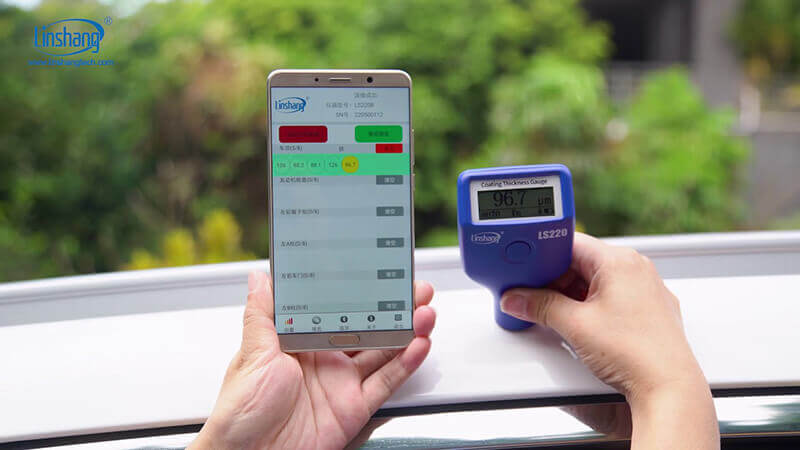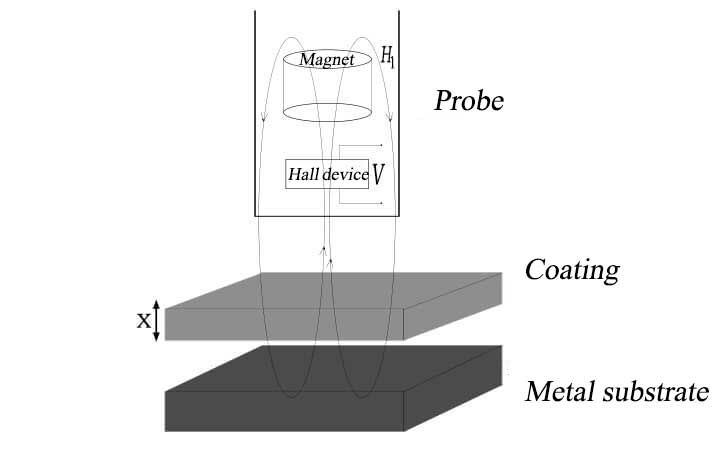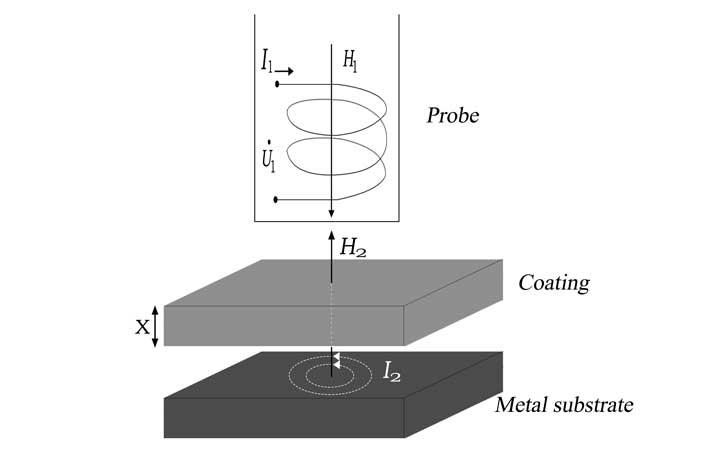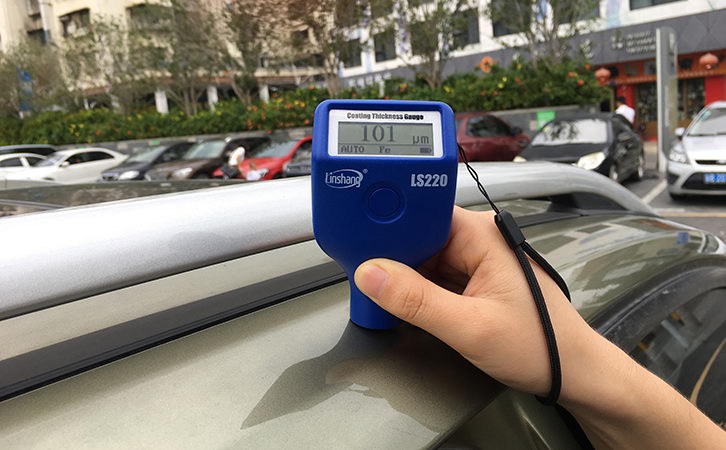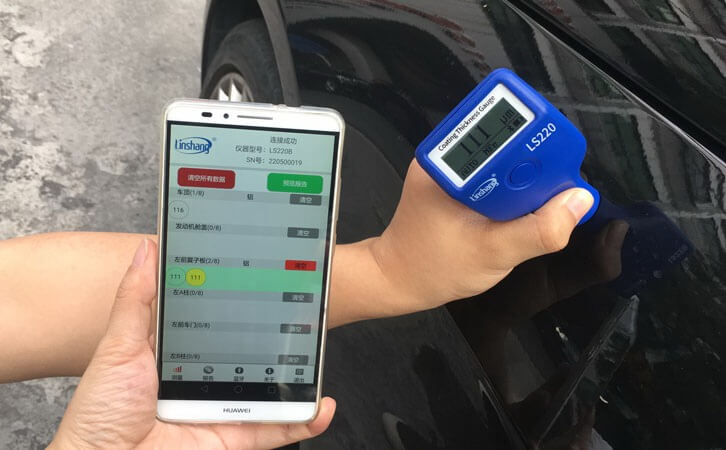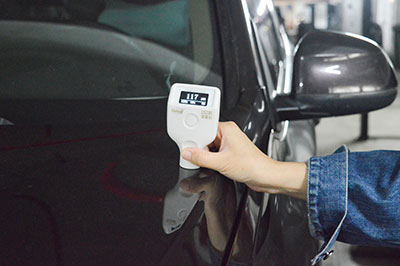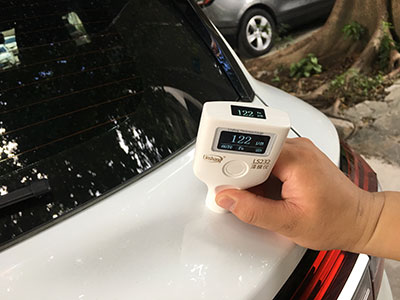Can We Use Auto Paint Meter Test Plastic Bumper?
There are different brands of auto paint meters on the market, but most auto paint meters are used to measure the paint thickness on ferrous and non-ferrous metal substrates. Let's take the Linshang LS220 auto paint meter as an example to explain why the plastic bumper can't be tested with the auto paint meter that use magnetic and eddy current principles. The main reasons are as follows:
1. Eddy current and magnetic auto paint meter
(1) Magnetic and Eddy current auto paint meter
The general auto paint meter adopts the magnetic and eddy current principles to measure the automotive surface paint thickness. We know that the power plant generates a magnetic field that in turn produces a power plant. But they are still based on metal substrate.
a. Magnetic auto paint meter principle
Magnetic auto paint meter is suitable for measuring the non-magnetic coating thickness on magnetic metal substrates. It is based on measuring the coating film thickness by using the magnetic flux of the probe through the non-ferromagnetic coating to enter the ferromagnetic substrate. The coating thickness can also be determined by measuring the magnitude of the magnetic resistance corresponding to the threshold. A static magnet is mounted on a balanced arm and therefore the force required to tug this magnet from the coating surface may be a measure of the coating thickness. Force is applied through a helical spring attached to the balanced arm at one end and to a scale wheel at the opposite . Due to that the scale wheel is turned the force is progressively increased until the magnet lifts from the coating surface. the size is drawn in thickness units instead of force and therefore the coating thickness are often read against a pointer on the case of the instrument.
b. Eddy current auto paint meter principle
Eddy current auto paint meter is used to measure non-conductive coating thickness on non-magnetic metal substrates. The coil core in the eddy current coating thickness gauge probe is usually made of a high-frequency material such as platinum-nickel alloy, which generates a high-frequency electromagnetic field in the coil by the current. After contacting of the conductor (metal substrate) at the probe and the bottom, eddy currents are formed on the metal substrate. The substrate characteristics and therefore the distance of the probe from the substrate (the coating thickness) affect the magnitude of the eddy currents. The eddy currents create their own opposing electromagnetic field which will be sensed by the exciting coil or by a second, adjacent coil. Eddy current auto paint meters look and operate like electronic magnetic gages. Like magnetic electronic gages, they commonly use a continuing pressure probe and display results on an LCD. They will even have options to store measurement results or perform instant analysis of readings and output to a printer or computer for further examination. the standard tolerance is ±1%. Testing is sensitive to surface roughness, curvature, substrate thickness, sort of metal substrate and distance from a foothold.
(2) Ultrasonic auto paint meter principle
Plastics, which are not electrically conductive in our lives, are insulators and do not generate magnetic fields. Therefore, this situation does not apply to the principle of Fe Hall effect and NFe eddy current. Therefore, plastic bumpers cannot be measured with the magnetic and eddy current auto paint meter.
If you want to measure the coating thickness on plastics, ultrasonic auto paint meter is recommended. An ultrasonic technique is used when measuring the paint thickness over non-metal substrates such as plastic and fiberglass. The probe of the auto paint meter contains an ultrasonic transducer that sends a pulse through the coating. The pulse reflects back from the substrate to the transducer and is converted into a high frequency electrical signal that is analyzed to determine coating thickness. In some circumstances, individual layers in a multi-layer system can be measured. Prices range between $1,800 and $4,000.
Note: The plastic materials are not metal or magnetic. If you need to measure the coating thickness on plastic, you can use ultrasonic auto paint meter. Plastic bumpers cannot be measured with the eddy current and magnetic auto paint meters. Magnetic auto paint meter is suitable for measuring the non-magnetic coating thickness on magnetic metal substrates. Eddy current auto paint meter is used to measure non-conductive coating thickness on non-magnetic metal substrates.
2. Auto paint meters for ferrous and non-ferrous substrates
Measure coating thickness on metal substrates
Wear-proof ruby probe
Temperature compensation function
Measure coating thickness on metal substrates
Bluetooth function
Temperature compensation function
2. 0.5s measuring interval
3. Dedicated for car paint thickness
4. Integrated type
2. Use in -40℃ environment
3. 0.5s measuring interval
4. Simple zero adjustment
- High precision coating thickness gauge for used car
- Automotive paint protection films coating thickness gauge
- Plating Thickness Measuring Instrument for Detecting Anti-corrosion Coating
- Linshang LS220, LS191, LS160A– Necessary for Car Cover Inspection
- Coating Thickness Gauge for Second Hand Vehicle
- Zero Adjustment Step of Coating Thickness Gauge
